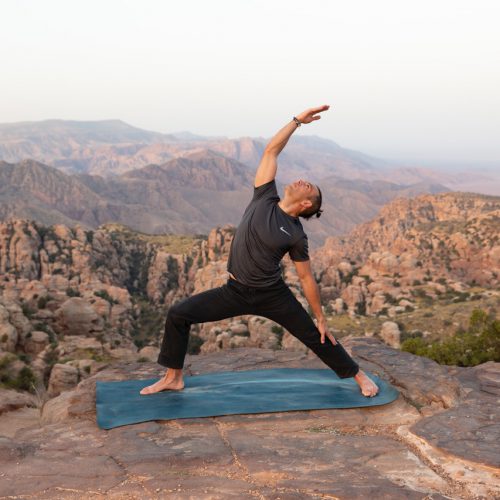Sometimes life can seem too overwhelming and stressful. The stress of our work, home, and social lives can take literally take control of our days. When stress becomes too overpowering, relaxation seems nearly impossible to accomplish. Finding ways to relax can be beneficial for both our mental and physical wellbeing. One of the oldest and most widely used relaxation techniques is the art of meditation. Since ancient times people have been meditating to relieve stress and promote unity and equilibrium within the body and mind. While meditation was originally a component of religious practice, it has become a popular relaxation technique in the mainstream today. Fortunately for us, in modern times meditation has become something that anyone can practice effectively and is even used in professional settings. For example, many psychologists employ guided meditation to treat patients. After a few minutes of research and practice, anyone can perform simple meditation.
The first step in using simple meditation effectively as a relaxation technique is to place yourself in the most comfortable area and situation possible, moving yourself to a location that is free of distraction and outside influence. Try to eliminate distractions for all five of your senses, wear comfy clothing, turn off all non relaxing music and other electronics, and make sure you are in an area where no one will disturb you.
Dressing in comfortable clothing is a must to achieve the height of meditative relaxation. While it doesn’t work for all people, using a relaxation CD mix can be very effective for many people enhancing the exercise. You must relax all five of your senses as much as possible and essentially tune out the world.
Once you have placed your body and mind in the most relaxing setting possible, the next step is to focus on your breathing. Breathing effectively is one of the keys of maintaining a stress-free life. Therefore, it is essential that we are able to master the most beneficial breathing techniques. At a steady constant pace, breathe in deeply through your nose and exhale slowly through your mouth. Breathing in this manner both increases your blood flow and naturally slows your heart rate. Proper breathing also has medical benefits. For example our blood is more likely to fend off infection and disease if it is properly oxygenated through deep breathing techniques. Deep breathing in meditation also promotes muscle growth and proficient energy use.
There are several positions used to meditate, ranging from standing to lying on a mat. However, the most widely used position is seated and cross-legged. This position is useful not only because you are seated but also because it naturally keeps your spine in line, which contributes to stronger breathing. While this is the most popular, the best position will vary from person to person. It is recommended that you try multiple positions until you find what works the best for you. The laying down position is effective because it puts us in an extremely comfortable state, but it is important however to not allow to get too comfortable lest the meditation exercise become a nap. The standing position for meditation is effective because it forces us to become relaxed in the position to which we are not accustomed.
Once you chose which position you will use for your meditation exercise and have prepared a relaxed setting, the rest of the process will be mental. There are a number of ways to approach the metal process of meditation. Some people chose to engage in the repetition of a positive, self-affirming mantra, focusing intently on those words and accepting them as truth. Others will choose to go on a mental journey through the use of visualization, using all five senses to see, hear, feel, smell, and taste their imagined location.
Meditation practices vary greatly depending on region, association with religious practice or association with vary fitness routines. However, this simple example of a meditative process is an excellent example of an easy relaxation technique that can be used at home on a regular basis to relieve stress.



